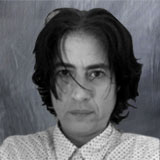 Loukou Maria / Phd candidate
Loukou Maria / Phd candidateMaria Loukou was born in Athens. She has received the B.A. in Visual and Applied Arts from Aristotle University of Thessalonikis’ Faculty of Fine Arts and the M.A. in Information and Communication Technologies in Education from the National and Kapodistrian University of Athens. While serving in the Culture Department of the General Secretariat for Youth, she worked as a coordinator and executive in the Organizing Committee of international events such as the Biennale des jeunes créateurs de l’Europe et de la Méditerranée (BJCEM). She has participated in Educational seminars with papers and published articles in magazine issues on Art. She works as an Art teacher in Secondary Education. She is currently a PhD candidate in the Department of Architecture at the University of Thessaly.
The purpose of this research is to explore relationships between citizens and contemporary urban spaces caused by their interactions with art and technology through intersected audiovisual narratives, projected on the material body of the city.
The city, as a material body, produces a continuous dialog, enriched with images and sounds that becomes part of a wider narrative through which perception of space is formed. Consequently narration becomes the basic tool in the production of meaning, the incarnation of culture, communication, and education. It becomes the backbone of human experience as it is interwoven with memory, the language of place, and a sense of personal identity.
Nowadays in the context of globalization, transnationality, the ubiquitous information society and the standardization of places, produce placeless individuals passively consuming images, products, time and space. Within this framework, the research intends to shed light on a number of issues like: the different connotations of space, the importance of narration and the management of technology, as well as to outline possible ways of developing aesthetic qualities through education, associated with the ethical foundations of human identity.
Hemmer’s art-pieces are pointing towards this direction. He is using technology to construct an augmented urban space where the spectator becomes part of the narration. His work creates a temporary artificial zone of experimentation with human identity and behaviour giving a sense of connection, engagement and empathy. Hence a state of conciousness is generated that makes the relational potential of public space visible. These interventions into the cites’ routine are changing the status of the individual from a consumer into an active participant in the articulation of socio-temporal modalities (Bounegru, 2009). As they would potentially lay the grounds for changing the patterns of aggregate behaviour we may assume that these particular public relationships have an educational perspective that is worth being investigated.
Conclusively the main research hypothesis is that education can play a crucial role in the production of new space forms and public relations. The objective is to establish and possibly design interdisciplinary educational tools and perhaps teaching methods on how “to inhabit the world in a better way” (Bourriaud, 2002).
Research methodology will be based on the semiology of images (Barthes), phenomenology and hermeneutics with emphasis on environmental design (Franck, Dovey, Alexander). Research methods will be specified during the proceedings.
